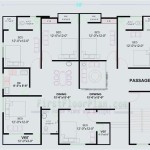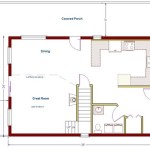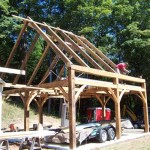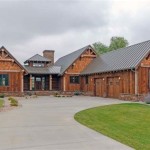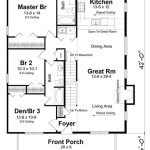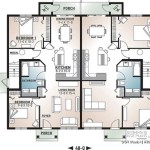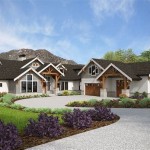New House Plans That Look Old: Achieving Timeless Elegance in Modern Construction
The allure of historical architecture continues to captivate homeowners seeking character and charm in their residences. However, aging infrastructure, outdated layouts, and limited energy efficiency often deter individuals from purchasing and renovating existing older homes. Consequently, a compelling solution has emerged: new house plans that incorporate the aesthetic elements of older architectural styles while utilizing modern construction techniques and materials. This approach allows homeowners to enjoy the benefits of a newly built structure with the visual appeal and ambiance of a historic home.
These "new old" house plans are a testament to the enduring appeal of specific architectural styles. From the stately lines of traditional Colonial homes to the rustic charm of Craftsman bungalows and the elegant simplicity of Farmhouse designs, architects and designers are adept at recreating the essence of these styles in contemporary floor plans. The result is a dwelling that feels both familiar and freshly conceived, offering the best of both worlds: the nostalgic comfort of the past and the conveniences of the present.
Key Considerations in Recreating Historical Aesthetics
Successfully emulating the look and feel of an older home in a new construction project requires careful attention to detail and an understanding of the defining characteristics of the chosen architectural style. There are several key considerations that guide the design process, ensuring an authentic and cohesive final product. These include exterior detailing, interior layout, and the selection of appropriate materials.
Exterior detailing encompasses a wide range of elements that contribute to the perceived age and character of a home. For instance, a Colonial-style house might feature a symmetrical facade, a prominent front entrance with a pediment, multi-pane windows, and clapboard siding. A Craftsman-style home, on the other hand, is likely to incorporate exposed rafter tails, a low-pitched roof with wide eaves, a covered porch supported by substantial columns, and natural materials such as wood and stone. Details such as window trim, door styles, and roofing materials play a crucial role in establishing the desired historical aesthetic. Architects carefully select these elements to align with the specific period and architectural style being emulated.
The interior layout of a "new old" home often reflects the functional considerations of the past while incorporating modern conveniences. Traditional layouts often feature distinct rooms with defined purposes, such as a formal living room, a separate dining room, and a dedicated library or study. While an open-concept floor plan is a hallmark of modern design, adapting this to a historical style often involves creating a sense of separation through the use of archways, columns, or changes in flooring materials. Strategic placement of windows and doorways is also vital to capturing the natural light and flow of older homes. The goal is to create a sense of warmth, intimacy, and timeless elegance.
The selection of building materials is another critical aspect of creating an authentic historical look. While utilizing modern, durable, and energy-efficient materials is essential for the structural integrity and long-term performance of the home, choosing materials that mimic the appearance of those used in the past is crucial for achieving the desired aesthetic. For example, using reclaimed wood flooring, antique-style lighting fixtures, and vintage-inspired hardware can instantly add character and depth to a new home. Brick veneers, stone accents, and shingle siding can also contribute to the perception of age and history. Selecting materials with textural variations and subtle imperfections further enhances the overall authenticity.
Popular Architectural Styles for "New Old" House Plans
Several architectural styles lend themselves particularly well to the "new old" approach. These styles possess distinctive features that are both aesthetically pleasing and adaptable to modern living. They include Colonial, Farmhouse, and Craftsman designs, each offering a unique blend of historical charm and contemporary functionality.
Colonial-style homes, characterized by their symmetry, formality, and classical details, evoke a sense of timeless elegance. These homes typically feature a rectangular footprint, a central front entrance, and balanced window arrangements. Interior spaces often include formal living and dining rooms, as well as a grand staircase. Modern Colonial designs may incorporate larger kitchens, updated bathrooms, and expanded master suites, while retaining the traditional architectural elements. Common materials include clapboard siding, brick accents, and multi-pane windows. Interior details often feature crown molding, wainscoting, and hardwood floors.
Farmhouse-style homes, known for their simplicity, functionality, and connection to the land, offer a more relaxed and informal aesthetic. These homes typically feature a gabled roof, a covered porch, and a casual, welcoming atmosphere. Interior spaces often include a large kitchen, a comfortable family room, and multiple bedrooms. Modern Farmhouse designs may incorporate open-concept layouts, updated appliances, and energy-efficient features, while retaining the rustic charm of the original style. Common materials include shiplap siding, board-and-batten accents, and metal roofing. Interior details often feature exposed beams, wide-plank flooring, and vintage-inspired fixtures.
Craftsman-style homes, characterized by their handcrafted details, natural materials, and connection to nature, offer a warm and inviting aesthetic. These homes typically feature a low-pitched roof with wide eaves, a covered porch supported by substantial columns, and a focus on craftsmanship. Interior spaces often include a cozy living room, a functional kitchen, and built-in cabinetry. Modern Craftsman designs may incorporate larger windows, updated appliances, and sustainable building practices, while retaining the handcrafted details of the original style. Common materials include wood siding, stone accents, and exposed rafter tails. Interior details often feature wood trim, built-in bookshelves, and stained-glass windows.
Benefits of Choosing a "New Old" House Plan
Opting for a "new old" house plan presents several compelling advantages over purchasing and renovating an existing older home. These advantages include energy efficiency, customization options, and reduced maintenance requirements.
Energy efficiency is a significant benefit of new construction. Modern building codes and materials ensure that new homes are far more energy-efficient than older structures. This translates to lower utility bills, reduced environmental impact, and increased comfort for homeowners. Insulation, windows, and HVAC systems are designed to minimize energy loss and maximize energy conservation. In contrast, older homes often require extensive upgrades to achieve comparable levels of energy efficiency. This can involve costly renovations and significant disruptions to the living space.
Customization options are another key advantage of building a new home. Homeowners have the opportunity to personalize the floor plan, finishes, and features to suit their specific needs and preferences. This level of control allows for the creation of a truly unique and functional living space. In contrast, renovating an older home often involves compromises due to existing structural limitations and design constraints. While renovations can certainly improve the functionality and aesthetics of an older home, they may not always be able to achieve the same level of customization as new construction.
Reduced maintenance requirements are also a significant benefit of new construction. New homes are built with modern materials and techniques that are designed to last. This translates to fewer repairs, lower maintenance costs, and less time spent dealing with home maintenance issues. In contrast, older homes often require ongoing maintenance and repairs due to aging infrastructure and outdated systems. This can involve significant expenses and considerable inconvenience for homeowners. By choosing a "new old" house plan, homeowners can enjoy the charm and character of an older home without the associated maintenance headaches.
In conclusion, the trend of "new old" house plans offers a compelling solution for homeowners seeking the aesthetic appeal of historical architecture with the benefits of modern construction. By carefully considering exterior detailing, interior layout, and material selection, architects and designers can create homes that evoke the timeless elegance of the past while providing the comfort, convenience, and energy efficiency of the present. This approach allows homeowners to enjoy the best of both worlds: a dwelling that feels both familiar and freshly conceived, a testament to the enduring appeal of historical design and the ingenuity of modern construction.

New House Floor Plans Old Charm

New House Floor Plans Old Charm

New Replica Historic House Plans Oldhouseguy Blog

1900s Farmhouse Plans Victorian House Floor

Home Design This New Old House

Plan 73733 Southern Style With 4 Bed Bath
:max_bytes(150000):strip_icc()/southern-living-house-plans-9-c3d0b0082ced4342a84d5b05a0b4d028.jpg?strip=all)
20 House Plans That Maximize Storage Space For The Organized Home Of Your Dreams

Plan No R 856 C 1918 Cottage House By A E Stillwell Vintage Bungalows Plans Transitio Bungalow Floor

7 Gorgeously Old Fashioned Farmhouse Plans

This Old House

